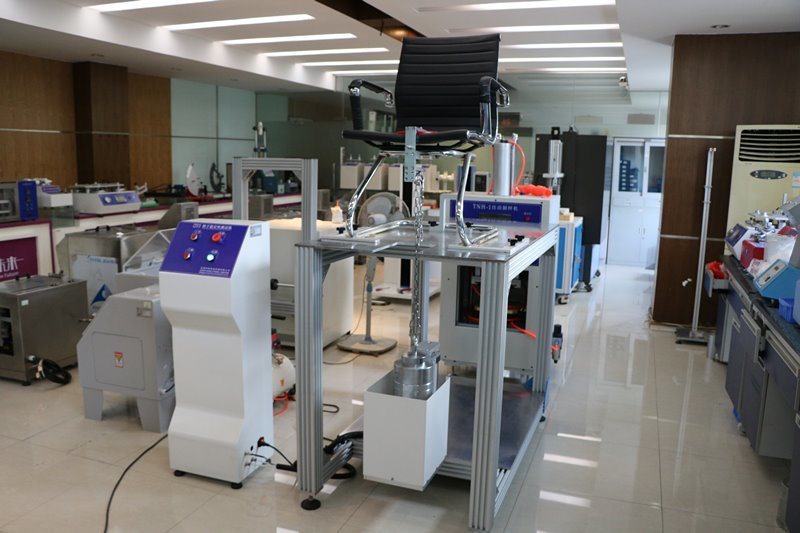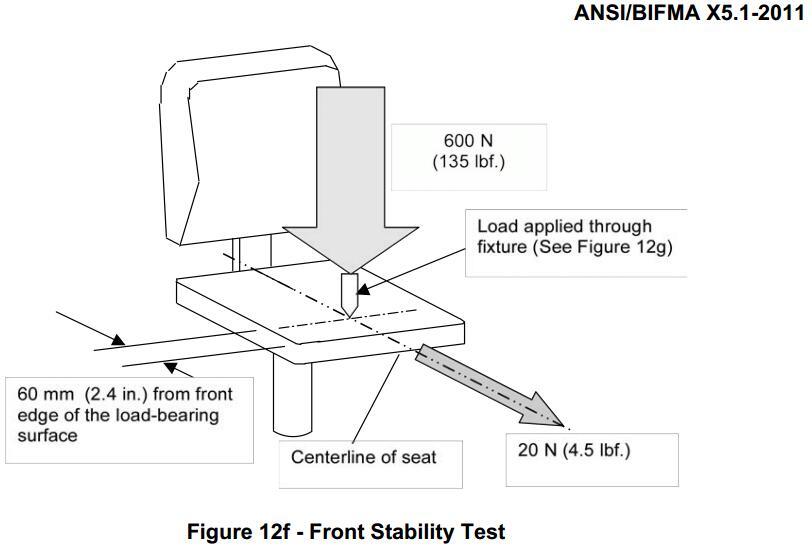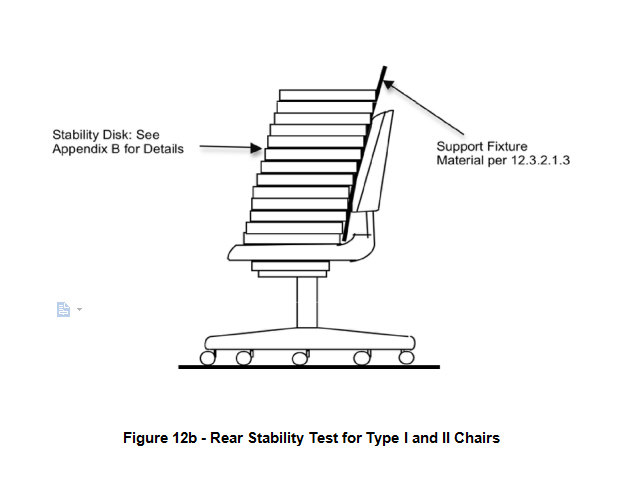BIFMA X5.1 Chair Front Rear Stability Lab Equipment
TNJ-023 Chair Seats Front Stability Test Machine

Product Description:
Bifma X5.1 Chair Front Rear Stability Lab Equipment is designed to evaluate the front stability of chairs and office seating products. This device ensures that the tested furniture meets industry safety standards by simulating real-world forces that could cause tipping.
Key Technical Specifications:
- **Seat Surface Load:** Maximum 600N, cumulative load - **Tensile Force:** 20N - **Loading Point Position:** Center of seat surface, 60mm from the front edge - **Loading Pad:** Diameter 200mm, curved surface with R300mm, 9 pins - **Loading Rod:** 19mm diameter, with two types of ends – A type: spherical (SR19mm), B type: sharp 45° surface - **Weights Basket Control:** Manual operation - **Overall Dimensions (W x D x H):** 100 x 140 x 105 cm - **Weight:** 500kg - **Air Source:** 6 kgf/cm² stable air supply - **Compliance Standards:** ANSI/BIFMA X5.1 - 12.4 Front Stability; EN 1022, EN 1729-2
Testing Procedures:


12.4.2 Test Procedure - Alternative A (See Figures 12c and 12d)
a) This method is applicable only for chairs without a solid seat surface that can support the loading fixture (e.g., mesh, web, or strap seats).
b) Apply a vertical load of 600 N (135 lbf.) using a 200 mm (7.87 in.) diameter disk, centered 60 mm (2.4 in.) from the front center edge of the seat's bearing surface.
c) Apply a horizontal force of 20 N (4.5 lbf.) at the same level as the top of the seat. The force must align with the side-to-side centerline of the seat.
12.4.3 Test Procedure - Alternative B (See Figures 12f and 12g)
a) Apply a vertical load of 600 N (135 lbf.) using the front stability loading fixture shown in Figure 12g, positioned 60 mm (2.4 in.) from the front center edge of the chair’s seat surface.
b) Apply a horizontal force of 20 N (4.5 lbf.) at the same height as the top of the seat, aligned with the side-to-side centerline.
12.4.4 Acceptance Criteria: The chair must not tip over when the forces are applied during testing.
KGS Air fryers use hot air circulation to cook food that would otherwise be soaked in oil. The cooking chamber of an Air Fryer radiates heat from heating elements near the food for more efficient cooking. A fan is usually used to circulate hot air around the food. The opening at the top is used to draw in air, while the exhaust at the back controls the temperature by releasing any unwanted hot air. It is also used to offset any increase in internal pressure. Internal temperature may be as high as 230°C (445°F) depending on model. For your safety, do not put oil in the fryer or place flammable items near the fryer. Typically, cooking time in an air fryer is reduced by 20% compared to a conventional oven. This will vary by brand and the amount of food cooked in the air fryer.
Large-capacity air fryer can cook more styles of dishes.
8L-14L Air Fryer,Air Fryer Without Oil,Power Air Fryer,Digital Air Fryers
Guangxi Nanning King Green Smart Co., Ltd. , https://www.smartliferobot.com